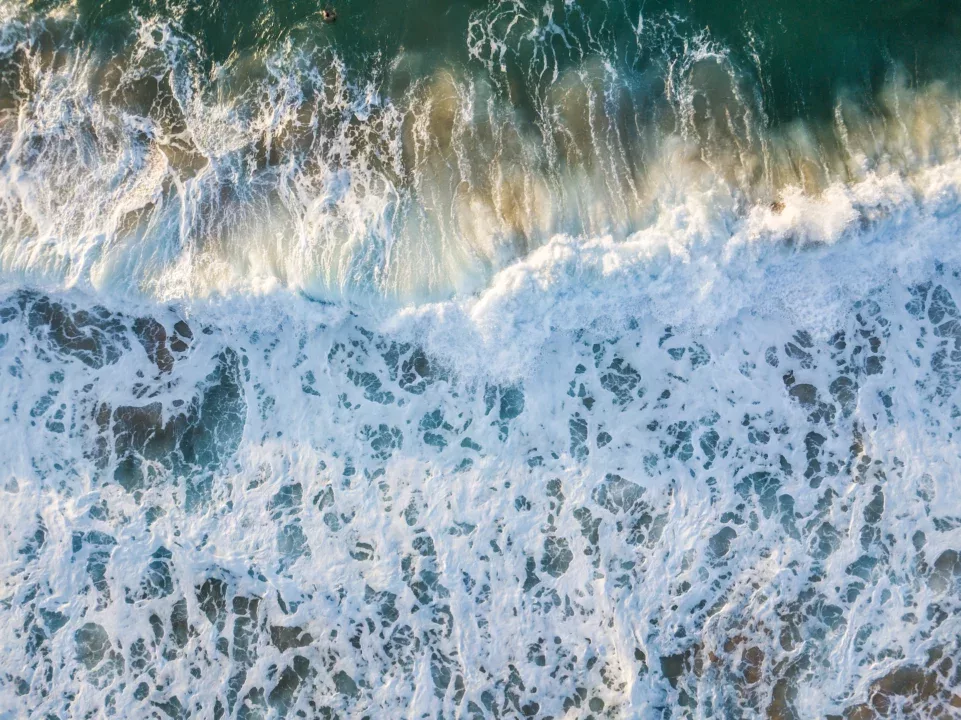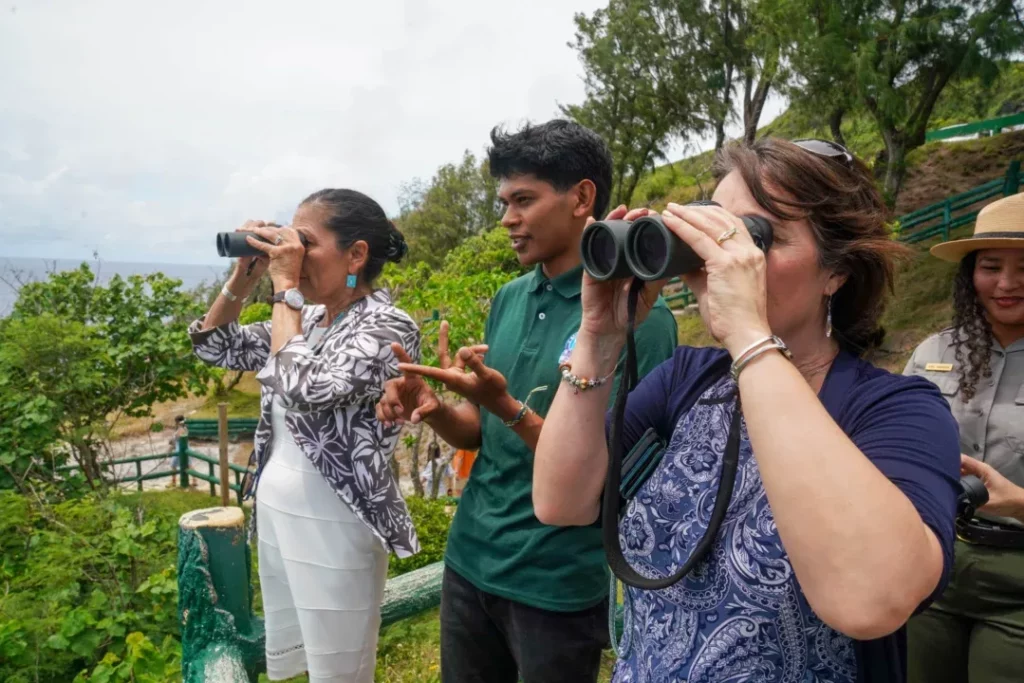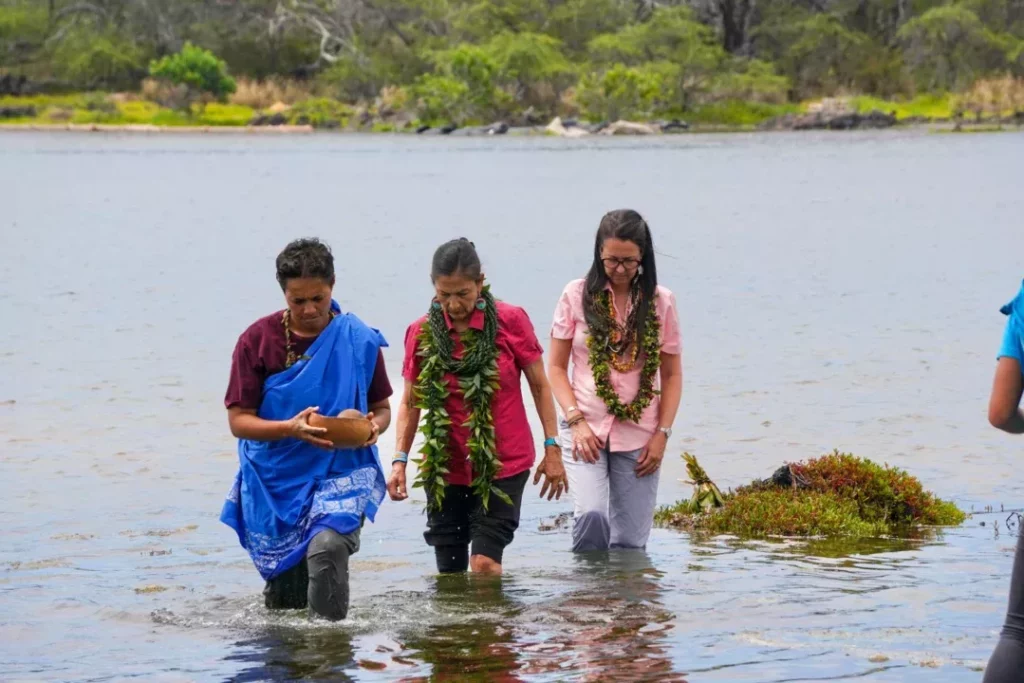NEWSWAVE is an award-winning newsletter from the U.S. Department of the Interior (DOI) that features ocean, Great Lakes and coastal activities from across the DOI federal government bureaus and their partners. NEWSWAVE reports on important news, policy and accomplishments for ocean and coastal resources. In each issue, DOI shares new Interior initiatives, exciting science discoveries, policy updates, relevant events and valuable contact information. Special features highlight unique programs, capabilities or resources spanning from the Arctic Ocean to the Remote Pacific Islands.
The recent issue (Fall 2023) of the U.S. Department of the Interior’s NEWSWAVE includes articles on the recent 47th U.S. Coral Reef Task Force Meeting in St. Thomas, USVI as well as other science, climate and cultural resource news from across the U.S.

$1.4 Million for Coral Reefs
The U.S. DOI’s Office of Insular Affairs (OIA) announced $1,432,994 in FY23 Coral Reef and Natural Resources Program (CRNR) grant funding for protecting coral reef and natural resources in the territories and the freely associated states. “Coral reefs are important income generators for tourism and food industries in island economies; and while coral reefs protect and harbour fish and other coastal resources, they also provide islands with critical protection from erosion and wave action from storms,” said Assistant Secretary Cantor. The projects and programs (including the National Coral Reef Management Fellowship program) funded through the CRNR program are described in the News Release.
Read More Here.
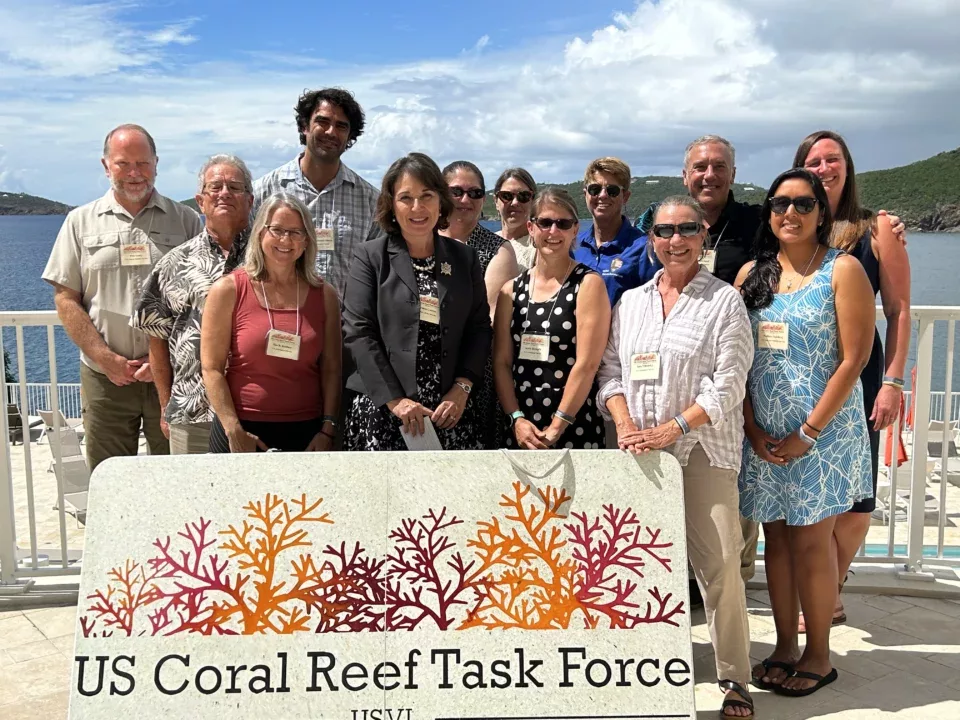
Corals Provide National Natural Infrastructure
On October 26, 2023, the U.S. Coral Reef Task Force approved a resolution recognizing coral reefs of U.S. states and territories as national, natural infrastructure. (See related story page 24) Coral reefs act like submerged breakwaters by breaking waves and dissipating their energy offshore before they flood coastal properties and communities. This is an enormously valuable function: In 2017, Hurricanes Harvey, Irma and Maria alone caused over $265 billion in damage across the nation. Restored reefs not only support critical biodiversity and coastal economies—they also reduce flood risks to coastal communities from storms and sea-level rise. In total, the annual coastal flooding risk reduction benefits provided by U.S. coral reefs exceed $1.8 billion (2020).
Read More Here.

Protecting Coral from the Heat
USGS Scientists Shade Corals in Emergency Rescue Effort
Three USGS scientists traveled to Dry Tortugas National Park in August to erect temporary shade structures in hopes they would lessen the effect of the sun’s rays and help the corals survive until the fall, when water temperatures traditionally drop. When experts arrived at the park, they found much of the corals had lost their colour: they were bleached.
Read More Here.
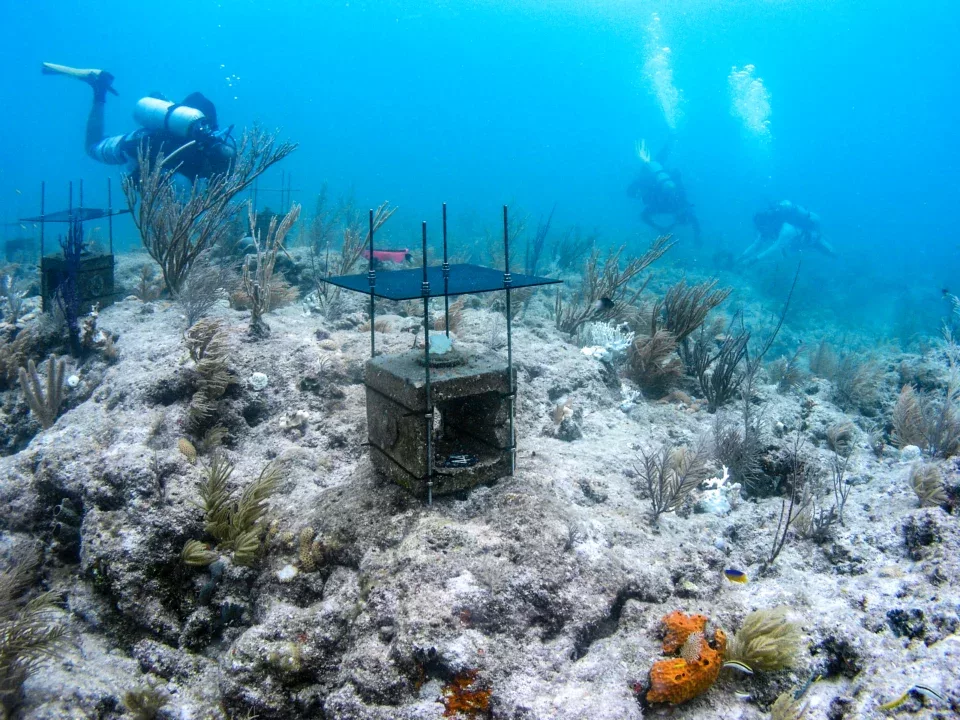
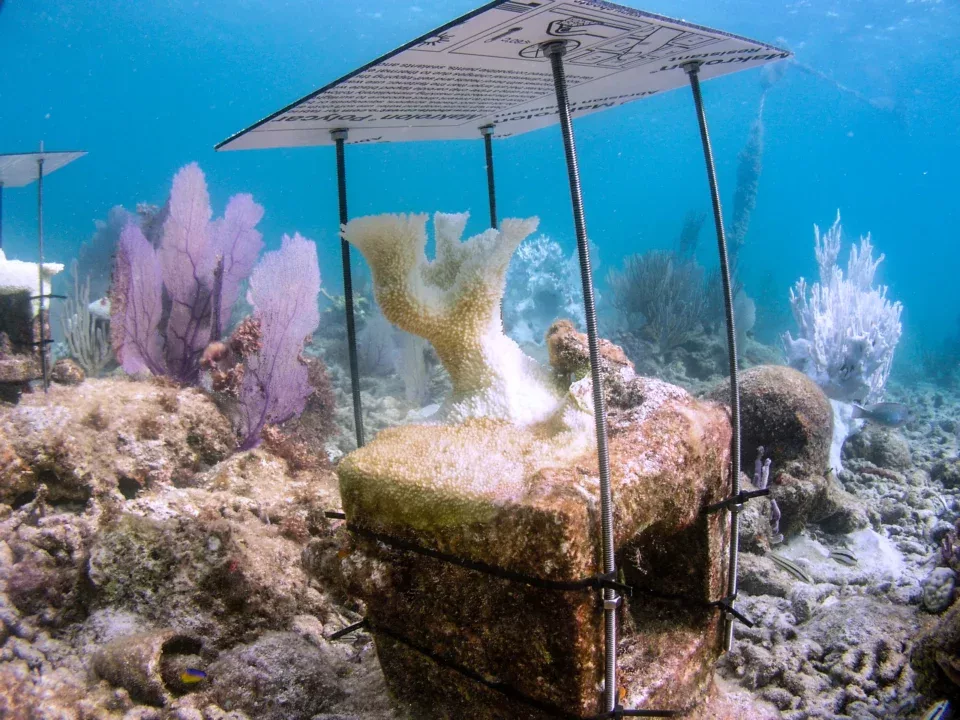
Secretary Haaland’s NEWSWAVE 5
Interior Secretary Deb Haaland is the first Native person to serve as a Cabinet secretary, she leads a department that once oversaw the removal of Indigenous people from their land. Learn more about Secretary Haaland’s five selected highlights of the work DOI is doing to bolster the Blue Portfolio, including Elevating Indigenous knowledge in Hawai’i and collaboration to protect coral reef ecosystems.
Read More here.
Traditional Knowledge
Many Indigenous communities possess a deep understanding of complex systems based on close interactions with their surroundings over many generations. BOEM strives to treat traditional and scientific knowledge as complementary knowledge systems. BOEM has learned that using both perspectives can provide a more complete understanding of the environment and result in better management decisions.
Read More Here.
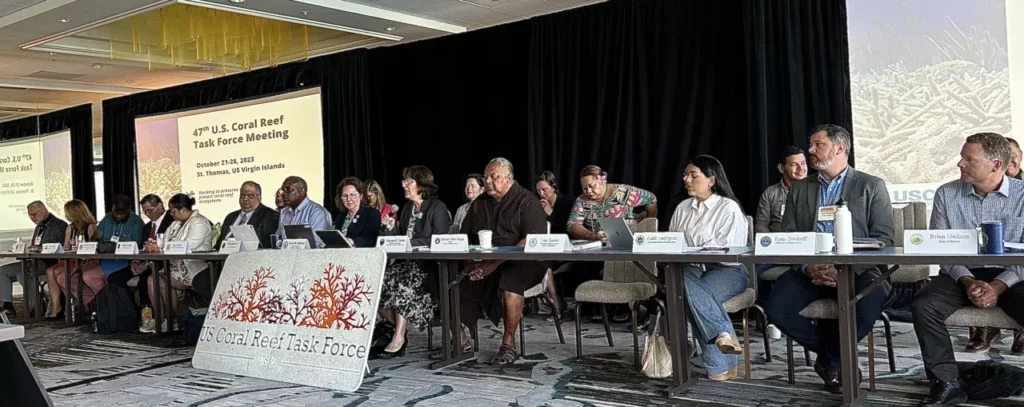
Source: NEWSWAVE FALL 2023
By: Ann Tihansky and Liza Johnson, U.S. Department of the Interior, Ocean, Great Lakes, and Coastal Program
